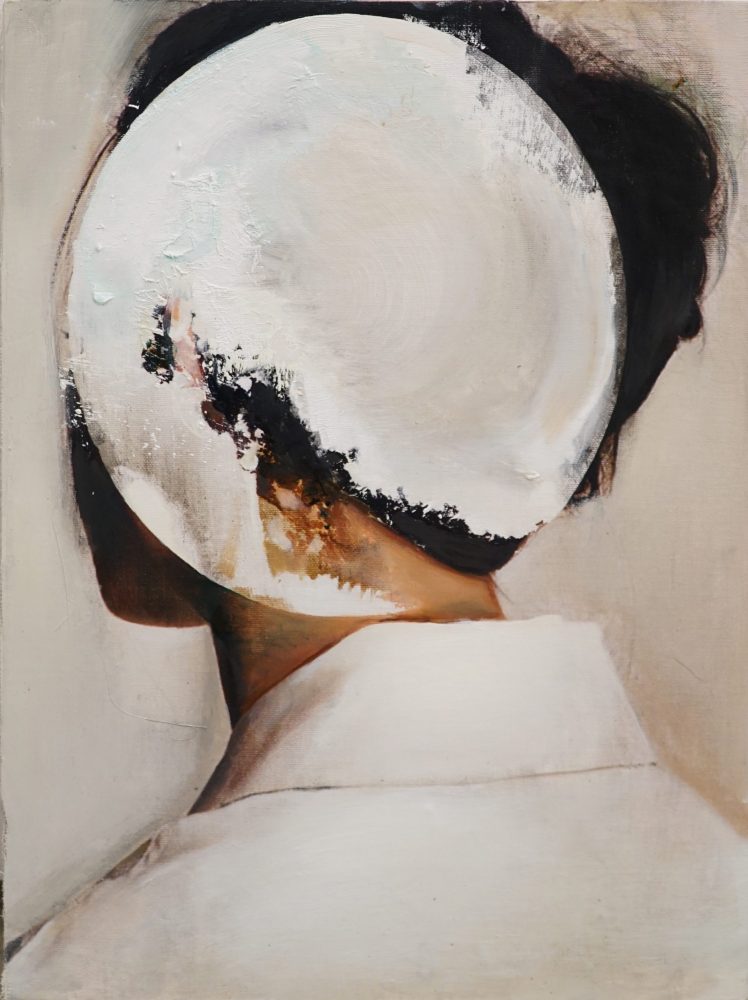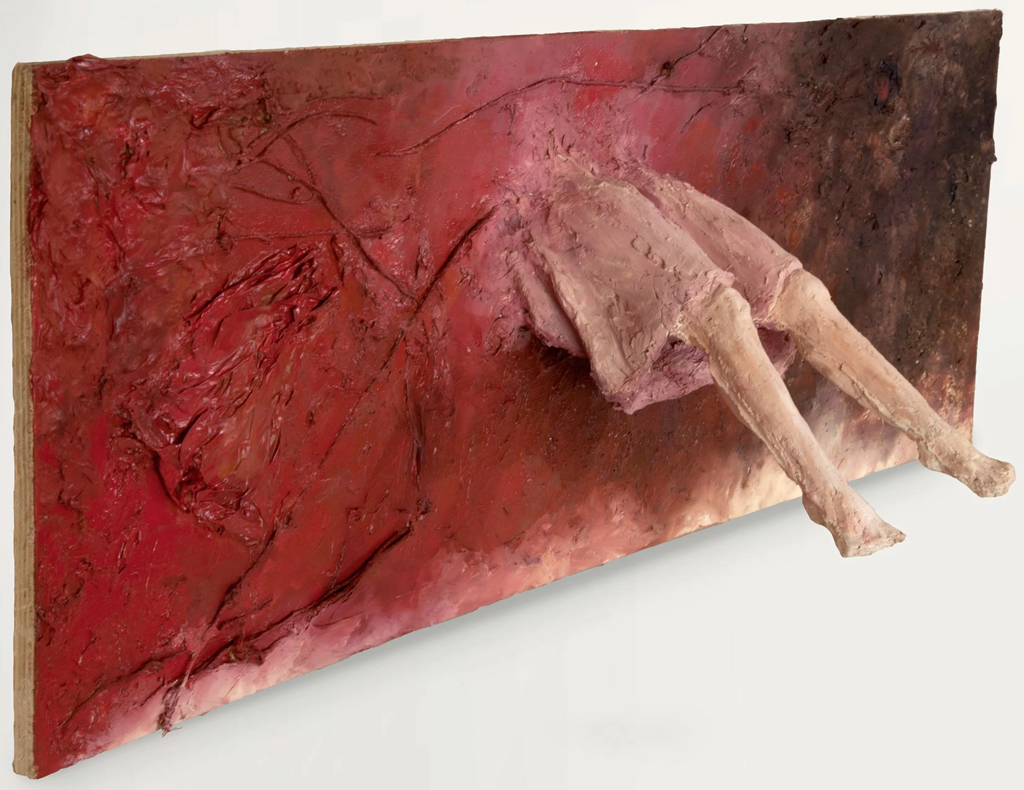
Starting with the question of hair in religious discourse, I intend—as my quip of a title suggests—to inquire into the femininity of God, or more precisely God’s existence as being beyond sexual difference.
Let us begin, then, with the idea that body hair and head hair are a major component of the perceived difference between men and women. The beard, traditionally, is considered a powerful, virile attribute, and the prohibition imposed on men in Judaism against shaving is seen as stemming from a desire to maintain a distinction between the sexes. Head hair, by contrast, is a feminine feature, associated with seduction, and modesty dictates that married Jewish women must keep it hidden.
Body hair and head hair may be visible examples of the difference between men and women, but from another perspective they are also symbols of the ineffable, that which transcends the male-female dichotomy. The representation of female body hair in L’origine du monde (The Origin of the World) by Courbet, for example, invokes the mystery of our origin.
What is the link between origin and sexual difference? Rabbi Delphine Horvilleur regularly articulates the point. In Genesis, Adam is presented as a whole creature, unseparated; God takes woman from Adam’s side (tsela), thereby making him a man and, in doing so, opposing him to woman. The difference between the sexes, then, is the result of separation from a single source. Through psychoanalysis, we can shed light on how these two concepts—the separation of the sexes and the transcendence of that separation—can coexist. While religion approaches this concept by returning to the origin, psychoanalysis examines it by going beyond language.
Freud theorizes the concept of psychic bisexuality, and the tipping point when a child becomes aware of the difference between the sexes and begins to identify with either the male or the female. The little boy in the Oedipal myth, when confronted with the girl’s nakedness, wonders why she does not have a penis and builds theories to explain what in his mind is a lack. It is, as he sees it, a matter of having or not having; it does not occur to him that a sex could be anything else. We often encounter this binary reasoning, belonging to the level of the visible, in relation to hair—we know how quickly children make judgments about gender based on the length of a person’s hair.
Lacan’s approach may allow us to go beyond the level of the visible. The boy from the Oedipal myth has entered into our language, and what we call his “perception” of sex differences belongs not to nature but to the logic of language, founded as it is on an axis of binary symbolism: man/woman, penis/no penis. The complexity of the truth—that the girl possesses an altogether different organ, rather than simply lacking a phallus—is dismissed, swept aside by the need to establish an opposition, to give structure to reality by dividing it. The little boy, with his biased perception, does not move beyond the threshold of the visible. What exists within the body of the little girl, what he does not see, is cast aside.
Judaism embodies ambivalent notions around sex
But what is cast aside for the sake of symbolism does not in fact disappear. Lacan reasons that the relationship between the sexes is not based simply on the presence or absence of the phallus, on whether one has it or does not, which would condemn women to experience only the jouissance of lack and to suffer from, to use Freud’s term, an insurmountable “penis envy.” Based on his study of mysticism, Lacan conceptualizes another type of relationship between the sexes. Beyond the complementary distribution of the phallus—its presence or absence—he proposes another, supplementary jouissance, not bound to the pleasure of the organ but involving the entire being, which he calls feminine jouissance. This is, of course, another sense of the word “feminine,” separate from the complementary dynamic with the masculine and the opposition between having and not having. In this sense, Lacan asserts, the feminine is no longer the opposite of the masculine, no longer a symbol of the absence of the phallus, as the little boy perceives it. Instead, the feminine is a point of possible access to otherness, unrelated to the phallus and belonging to men as much as to women. Lacan’s argument is not without echoes to the deconstruction undertaken by gender studies to lay bare the possibility of connection to an otherness that lies outside the binary of man or woman.
Judaism has long embodied ambivalent notions around sex: the obligation to separate men and women as a primary imperative and, at the same time, a pliable conception of masculine and feminine that shifts according to context. In religious texts, we encounter a feminine interpretation of certain duties ascribed to men, such as prayer, in which the one praying is in a feminine position in relation to God.
Hair has a dual relationship to our world. On the level of the visible, men wear their beards as a symbol of masculine power, and women hide their hair as a sign of their femininity, their modesty. In religious texts, however, we find another level of meaning, another kind of logic coexisting with the first. For the Kabbalists, the man’s beard contains ethereal significance, a link to God, out of which comes the prohibition against cutting even a single hair—in other words, against making a separation. Here again we see the notion of something beyond the human ideas of sexual difference. A man’s beard may thus also be considered a feminine symbol, as Lacan conceives of the feminine, opening into the mystical consciousness of the other.
For Lacan, God has two faces: a masculine face of prohibition, and a feminine one of the symbolic beyond. Could it be that God has both a beard and long tresses, like the hipsters of today? Contrary to Christianity, which portrays God as bearded and male and has separated the female through the long-haired figure of Mary, Judaism forbids the representation of God. Might this suggest that God does not live in the realm of the visible—the realm of perceived sexual division? Chagall represents God through his hands, a territory common to both men and women, in which the distinction between the two loses its meaning.
Translated by Emma Roy
